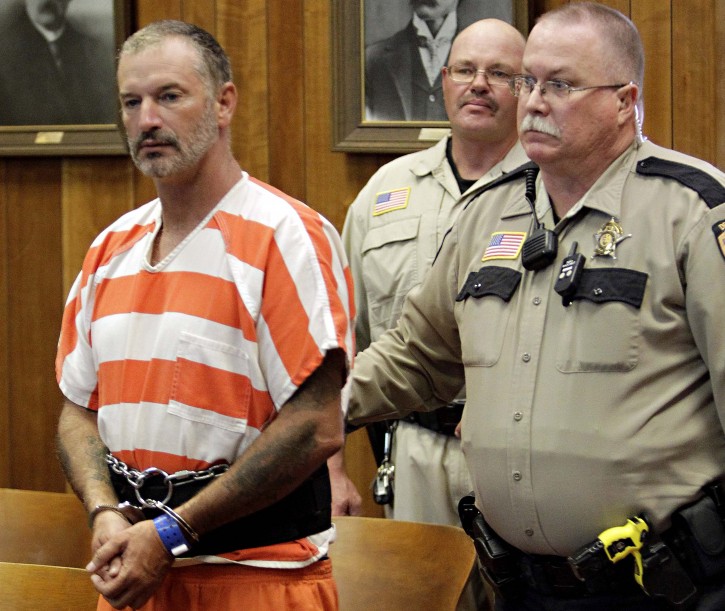
New York – One escaped inmate was captured wearing his victim’s baseball cap. Two other fugitives were too busy enjoying wine and cheese to stay ahead of police.
As authorities hunt for two escaped killers in New York, history shows that most inmates who manage to break out of prison get caught.
Why? Because an inmate who spends months meticulously plotting an escape often doesn’t have a long-term strategy for remaining free, experts say.
“They spend a lot of energy trying to figure out how to escape,” said Patricia Hardyman, associate director of the Association of State Correctional Administrators, “but then they don’t make very good plans about what to do once they get out.”
Here’s a look at some high-profile escapees — and the circumstances of their capture.
SNACK ATTACK
In 1984, six condemned killers broke out of the Mecklenburg Correctional Center in Virginia with an elaborate ruse involving a hostage, a fake bomb and stolen riot gear. All six were recaptured within three weeks.
The first two were caught within a day. Derick Peterson and Earl Clanton Jr. were drinking wine and eating cheese outside a coin-operated laundry when police took them into custody.
Reporters asked Peterson how he let himself get captured.
“Damned if I know,” Peterson replied.

DEAD MAN’S CAP
In July 2010, John McCluskey escaped from a medium-security prison near Kingman, Arizona, with help from his cousin and fiancee, Casslyn Welch, who had tossed a pair of wire cutters onto the prison grounds. McCluskey, a second escaped inmate and Welch then carjacked and killed a vacationing Oklahoma couple.
Three weeks after the prison break, McCluskey and Welch were camping in Arizona’a Apache-Sitgreaves National Forest when an alert ranger spotted what he thought was an unattended fire, then a beat-up Nissan hidden in the trees. The ranger called for backup and McCluskey and Welch were captured without incident.
McCluskey, it turns out, was wearing the dead man’s John Deere hat.
“Who wears a dead man’s hat?” a prosecutor told the jury at McCluskey’s trial. “Is this some kind of trophy? Is this like a keepsake or a memento?”
MENACING MISSIONARIES
They were known as the “Texas 7,” and they staged the largest prison break in Texas history.
In 2000, inmates at the Connally state prison south of San Antonio overpowered several workers, stole weapons from the prison armory and escaped in a prison truck. About two weeks later, the escapees shot and killed a police officer who had disrupted their Christmas Eve robbery of a sporting-goods store.
The gang made its way to Colorado, posing as Christian missionaries during their stay at an RV park. A neighbor wasn’t fooled, calling police after the case was featured on the “America’s Most Wanted” TV show.
FUGITIVE FACIAL RECOGNITION
James Robert Jones seemingly did everything he needed to elude capture following his 1977 escape from the famed military prison at Fort Leavenworth, Kansas.
Jones, who had been convicted of killing a fellow soldier at Fort Dix, New Jersey, lived quietly in a suburb of Fort Lauderdale, Florida, for at least 30 years. He got married, worked for an air conditioning company and avoided trouble.
Jones still got caught — thanks to technology that didn’t exist when he escaped.
Using facial-recognition technology, the U.S. Marshals Service matched an old military photograph of Jones with a Florida driver’s license issued to a man name Bruce Walter Keith — Jones’s alias. Jones was arrested last year.
I SURRENDER
Hugo Selenski made it easy for police: He surrendered.
Selenski had broken out of a Pennsylvania jail in 2003 by climbing down a 60-foot rope made out of bedsheets, then used a mattress to avoid slashing himself on the razor wire that topped a perimeter fence.
Selenski, in whose yard authorities found at least five sets of human remains, remained on the lam for three days as law enforcement officials and his own attorney appealed to the fugitive to turn himself in.
Though police had no confirmed sightings of him, he heeded their advice. Selenski’s attorney called police to arrange the surrender.
As reported by Vos Iz Neias
